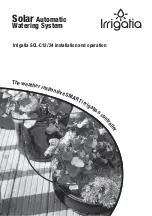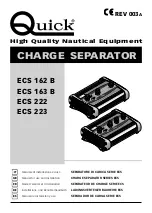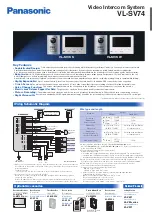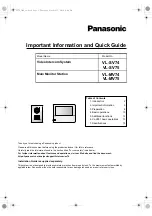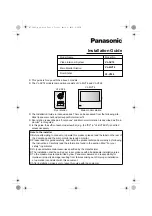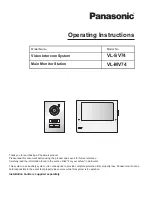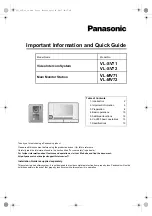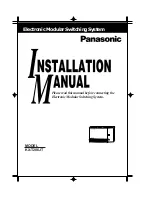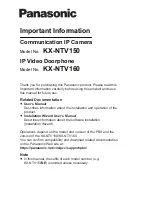
Getting Started
The control unit requires 3 x AA rechargeable
batteries (NOT NORMALLY INCLUDED – please
check the box). To insert batteries
remove the lid carefully by removing
5 screws (taking care not to detach
the wire connecting it to the case).
Insert the batteries into the case
ensuring the + is in the correct
position, then replace the lid and screws.
Attaching the control unit
The CONTROL UNIT
should be fixed to a wall
or post facing in a sunny
direction. If your water
barrel is in a shady
position, the control
unit may be sited some
distance from the water barrel. It should be no more
than 2 metres higher than the bottom of the barrel
or more than 20m distant.
Connect to the water barrel
Drill a 5.5mm hole in the lid, or near
the top of the water barrel, above
the water line. Thread some tubing
through the hole and attach the
filter to it. Adjust the tubing so the
filter hangs about 10cm above the
bottom of the barrel. The other end
of the tube should be taken to the
control unit, cut cleanly to length and
attached to the pump inlet – the left
hand connector marked I.
The connections to
the pump should be
straight (to avoid
leakage) and should
not pull the control
unit out of vertical.
10mm of tube needs
pushing into the connector port to ensure a good
connection and avoid potentially serious problems.
You can easily measure, then mark 10mm with a
piece of tape.
Check the PUMP
In a new control unit the batteries may be charged
or flat. If they have charge in them, before
connecting to the irrigation system, using a piece of
tube connected to the outlet (marked O) discharging
back to the water barrel, allow the unit to run until
it stops.
Connect to the irrigation system
The control unit is designed to work with between
6 and 24 drippers. Using less than 6 may cause
damage. As you increase the number of drippers,
less water will be emitted by each one, additionally
there will be less back-pressure in the system so it
will become less tolerant of height differences. With
12 drippers in place height differences of 2m are
normally ok.
Switch on
Turn the knob to 3. Do
not worry if the pump
does not start it should
start itself after 3 hours
in good daylight. Please
note the unit will not run
in the dark. If after 24h
the pump has watered too much, turn in down, or if
too little turn it up. Repeat until you are happy.
If your pots/baskets drain a little after the afternoon
watering on a sunny day, this is about right for
most plants.
Monitoring
The timer on the control unit is zeroed by turning
the unit off and on again. In daylight the pump will
start automatically after a few seconds (if there
is sufficient battery charge) and thereafter at
roughly 3 hour intervals. The duration of pumping is
determined by how much light/sunshine has fallen
on the solar panel and the position of the control
knob since it last ran. Put a dripper in a jug to see
how much each dripper is delivering.
IMPORTANT – the batteries will NOT charge if
the control unit is turned off.
Pump priming
The PUMP is self-priming, but if the outlet tubes
are full of water disconnect it until all of the air
has been pumped out of the inlet line, as a head
of water above the pump can prevent it priming
properly. In some situations it may be helpful to
lower the pump until prime is established.
Control unit status indications
• LED on continuously – pump running
• LED charge rate indication – flashes per 5
second cycle – corresponds to switch position
number.
1 = 20%
2 = 40%
3 = 60%
4 = 80%
5 = 100%
• LED flashes 10x per second and warning bleep
sounds – water sensor detects low water. (Unit
also stops watering)
• LED flashes 10x per second, then off 1
second. Soil moisture sensor (not included &
not available with all models) detects soil wet
enough. (unit stops watering)
• LED flashes once every 10 seconds – night
mode, pump will not run and bleeper will not
sound
Maintenance
Keep the control unit in a frost-free place in winter.
Battery life is typically around 1 – 2 years but
will vary considerably depending on the nature of
usage. For peace of mind if the batteries are more
than 1 year old, put in new batteries before going
away on holiday then use the old ones up when you
come back.
Laying the irrigation tubes
A typical layout is shown in fig5. The tube can be
cut and joined in any way you wish to reach your
plants. The highest dripper should be no more than
5m higher than the water source or 2m higher
than the lowest dripper.
Branches leading to
groups of drippers are
no problem and extra
drippers can be put in
bigger pots/baskets.
The tube must be
pushed/screwed right onto the drippers and tees to
avoid leakage. Drippers should be staked in place.
Typically a SOL-C12
kit will supply enough
water for 5 well grown
35cm hanging baskets,
12 tomato plants, 20 x
10 litre pots or a 12m
by 30cm strip (about 4m2) of bed, though these
figures will vary depending on soil and plant types.
A SOL-C24 will supply twice as much water.
Installation of anti-siphon
device
Where the level of the source
water is higher than the
first dripper or seep hose,
an air release device will be
required to prevent siphoning.
1. Remove the outlet tube
from the control unit.
2. Cut tube 5 – 10cm from the end.
3. Screw the anti-siphon device onto the end of the
tube leading to the drippers.
4. Screw the remaining short piece of tube on, then
reconnect to the control unit outlet (marked O).
When the pump has been running, the drippers will
continue to drip for a short time while the delivery
tube drains, but should then stop.
Installation of optional seep-hose kit
(available
to purchase separately)
Up to a metre of seep hose can be pushed onto
each of the 12 drippers supplied with the starter kit.
A stopper should be put in the other end and stakes
can be used to hold it in position. This arrangement
can be used to spread water over a larger area
than the dripper alone and is useful for large pots/
baskets, germinating short rows of seedlings,
Irrigatia SOL-C12/24 installation and operation
10MM

